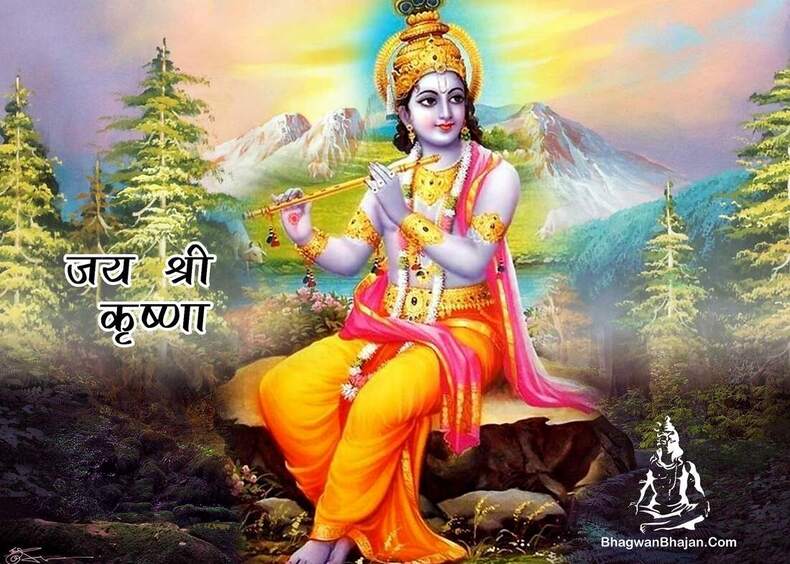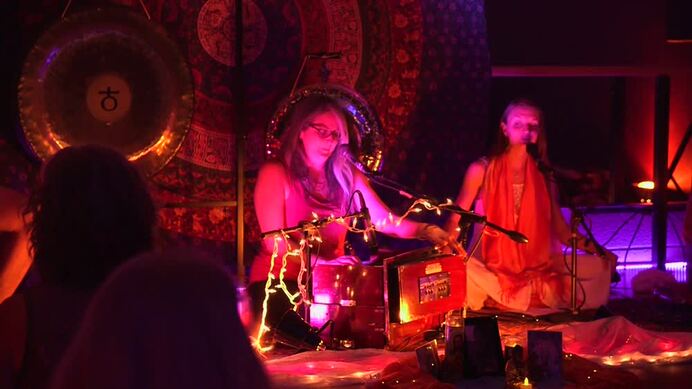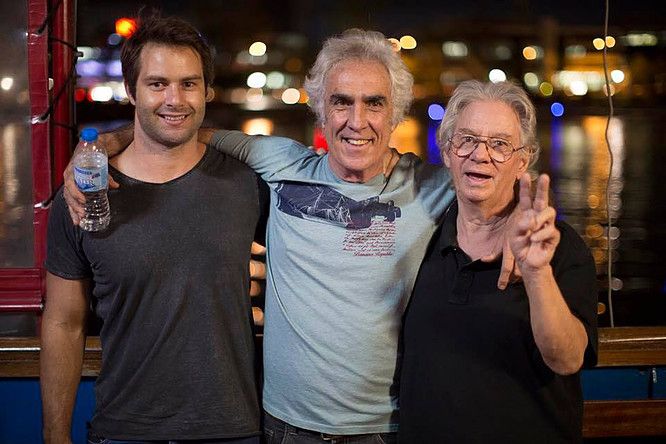Krishna the flute player, in Nature
Kirtan musicians in concert.
hare Krishna hare Rama in Music.
hare Kṛśṇa hare Kṛśṇa Kṛśṇa Kṛśṇa hare hare
hare Krishna hare Krishna Krishna Krishna hare hare
hare Rama hare Rama Rama Rama hare hare
(Pronunciation guide. ṛ and ṇ with a dot under are pronounced with tongue pointing towards the mid palette, instead of the teeth. A more subtle way of pronouncing Krishna.)
hare Krishna hare Krishna Krishna Krishna hare hare
hare Rama hare Rama Rama Rama hare hare
(Pronunciation guide. ṛ and ṇ with a dot under are pronounced with tongue pointing towards the mid palette, instead of the teeth. A more subtle way of pronouncing Krishna.)
Krishna as the Beauty of Music.
It is useful to interpret this Sanskrit mantra in terms of music meditation, for Kīrtan is a special kind of meditation : music meditation.
Krishna was a well dressed musician, whose flute music was so appealing, that it won the hearts of the cow herding maidens, the Gopis, especially Radha (properly spelled Rādha, and pronounced Raadha.) Indeed, most images of Krishna depict him as a musician.
Our male Kirtan musicians create beautiful music on the bansuri flute, just like Krishna did, and Kirtan is a form of music meditation.
Thus Krishna can be understood to be a performing musician who is well dressed and gifted. This suggests that –
- Krishna can mean the “beauty of music”. This beauty is foundational to the success of music meditation.
Appreciation for music is necessary to unlock the real beauty of music. Skill in meditation greatly improves your ability to practice music appreciation. With such skill, it is so much easier to move into the music and leave all mental busy-ness behind.
In music meditation, the music becomes the meditation object. We focus all our attention on the sound and dynamics of the music. Try to focus on all the subtle nuances that the professional musician adds to their performance, to create music that people will pay for.
Or more precisely, focus on the beauty of the music. This beauty is the key that unlocks the door. Thru this doorway dwells the real healing power of music. A place where we can become fully absorbed into the music, because we are really enjoying it. Full absorption into the meditation frees us from the ego and the false mind made self. Full absorption = samādhi is very healing. Samādhi has profound significance on the Path of meditation
- hare can mean “experiencing” or “moving towards”, and
- hare Krishna can mean “experiencing the beauty of music” or
- hare Krishna can mean “moving towards the beauty of music”.
- Rama can mean the beauty, enjoyment and attraction of music,
- hare Rama can mean “experience the enjoyment of music” or
- hare Rama can mean “move towards the beauty music.”
Thus hare Krishna hare Rama can mean –
- fully experiencing the beauty of music
In this, Krishna and Rama are both Names for Deity.
The Music.
Pralad enjoying his Kirtan
Naz, bass player, Pralad, and Glen (Gauranga) the drummer, of Prahlad and the Chants.
Anah, the female singer on "Acoustic Journey", resting during rehearsal
For the hare Krishna hare Rama mantra, I recommend “Acoustic Journey”, by Pralad and the Chants, of south Queensland. This excellent CD is a live recording at Mt Gravatt, Brisbane, with call-and-response, and slow build up to climax. Pralad Das has very skilled on the guitar, and can create a real musical atmosphere with it. His devotion to Kirtan as a spiritual practice makes his singing really special.
The hare Krishna hare Rama mantra appears in all songs, put to a variety of well known tunes. Pralad is a wonderful musician, and I have enjoyed dancing to several of his concerts at the Mantra Room, Westend of Brisbane. You can listen to short samples of each song, and buy this album for $15 as a download at -
https://www.praladandthechants.com/
Pralad and the Chants has been performing at the Nadia Rainforest Retreat, 323 Hogans Rd, Upper Duroby, south west of Tweed Heads, New South Wales, near the Qld border. Also occasionally at the Mantra Room, Brisbane. His facebook page might tell you of upcoming events –
https://www.facebook.com/PraladandTheChants/
Pralad uses a few other chants.
bol just means “sing aloud” and thus it can mean “please join in”. Pralad often calls “Hari bol !” to his audience, during his songs.
Hari can stand for the Name for Deity, especially Krishna and Rama. Thus -
Gau is short for Gauranga, also known as Chaitanya, and Nitai is short for Nityananda. Chaitanya and his friend and supporter Nityananda popularised the Bhakti practice of chanting the hare Krishna, hare Rama mantra, in India 500 years ago. They also promoted study of the Bhagavad Gita, a discourse by Krishna thousands of years ago. Thus -
Pralad Das also uses these Names, Chaitanya, Gauranga, as a mantra in his songs. He opens the album with the following mantra -
jaya jaya guru dev
success learning from radiant Presence
May we succeed in learning from the radiant Presence of Deity.
The hare Krishna hare Rama mantra appears in all songs, put to a variety of well known tunes. Pralad is a wonderful musician, and I have enjoyed dancing to several of his concerts at the Mantra Room, Westend of Brisbane. You can listen to short samples of each song, and buy this album for $15 as a download at -
https://www.praladandthechants.com/
Pralad and the Chants has been performing at the Nadia Rainforest Retreat, 323 Hogans Rd, Upper Duroby, south west of Tweed Heads, New South Wales, near the Qld border. Also occasionally at the Mantra Room, Brisbane. His facebook page might tell you of upcoming events –
https://www.facebook.com/PraladandTheChants/
Pralad uses a few other chants.
- Hari bol, Nitai-Gau, Nitai-Gau Hari bol.
bol just means “sing aloud” and thus it can mean “please join in”. Pralad often calls “Hari bol !” to his audience, during his songs.
Hari can stand for the Name for Deity, especially Krishna and Rama. Thus -
- Hari bol can mean “sing aloud the Names of Deity.”
Gau is short for Gauranga, also known as Chaitanya, and Nitai is short for Nityananda. Chaitanya and his friend and supporter Nityananda popularised the Bhakti practice of chanting the hare Krishna, hare Rama mantra, in India 500 years ago. They also promoted study of the Bhagavad Gita, a discourse by Krishna thousands of years ago. Thus -
- Nitai-Gau can mean “spiritual leadership," and
- the title Das also means "spiritual leader."
Pralad Das also uses these Names, Chaitanya, Gauranga, as a mantra in his songs. He opens the album with the following mantra -
jaya jaya guru dev
success learning from radiant Presence
May we succeed in learning from the radiant Presence of Deity.
©Copyright by Mike Browning, 2021. You are permitted and encouraged to copy text from this webpage and use as you see fit, provided it is not harmful to mantra-translate.






